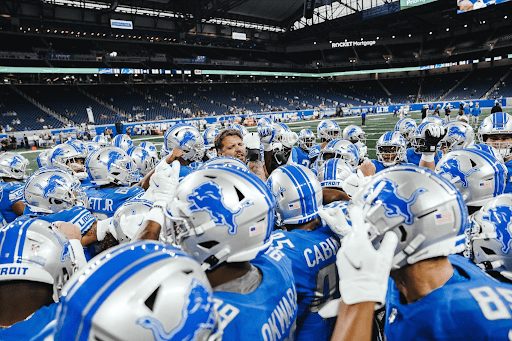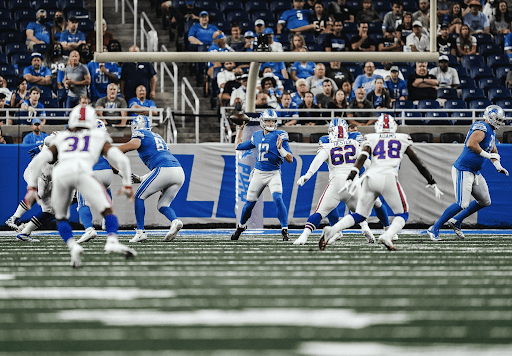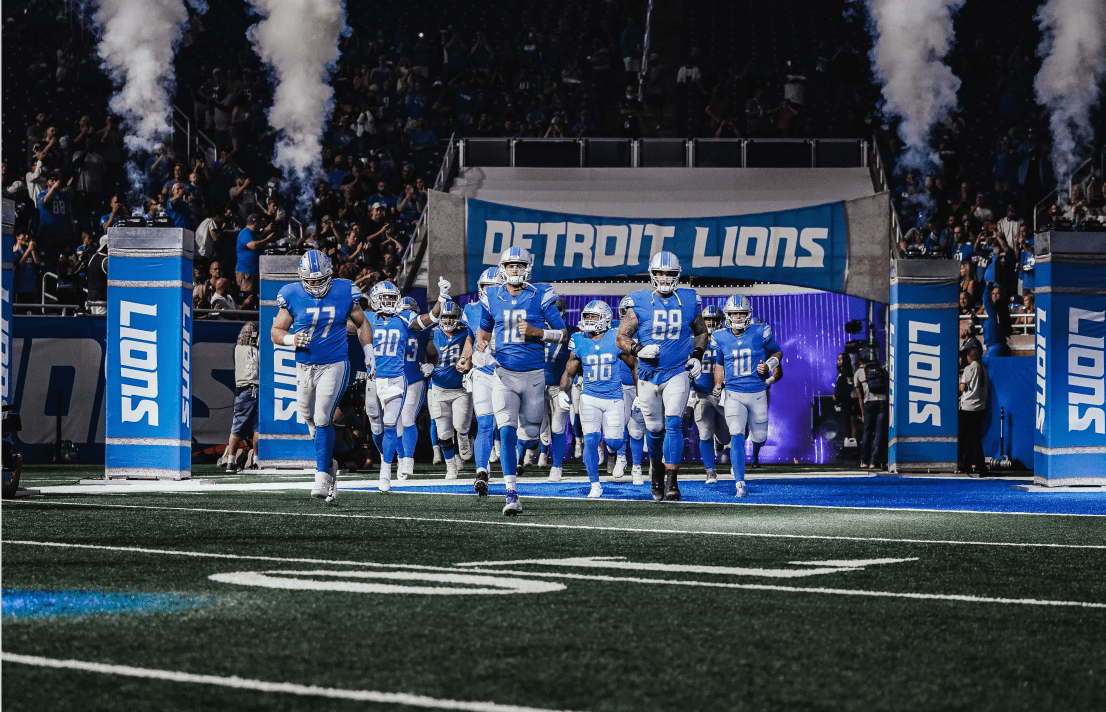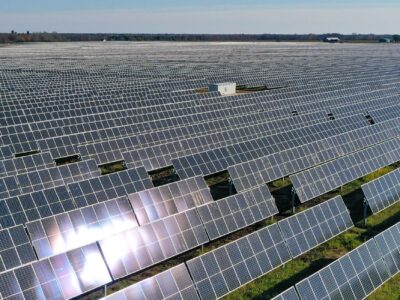Detroit – also known as Motor City – is the heart of America’s automotive industry, and with that comes a history of innovation. So it comes as no surprise that Detroit’s Ford Field football stadium was built with long-term sustainability in mind.
Sustainability is the very foundation of Detroit’s Ford Field – literally. Its concrete frame contains 10 million pounds of recycled steel, with another 20 million pounds in its dome ceiling. Renewable materials like bamboo and recycled glass are part of the floors throughout this multi-purpose complex.
At the same time, 25,000 recycled tires help compose the field, an eco-friendly artificial surface known as “FieldTurf.” Particularly prominent is the old J.J. Hudson Department Store warehouse incorporated into its main concourse, which also features a preserved section of Adams Street, a once-bustling downtown Detroit thoroughfare.
This sustainability emphasis isn’t surprising since a prime mover behind the stadium’s creation was Detroit Lions’ Vice Chairman (and then Ford Motor Company chairman and CEO) Bill Ford, who has long been committed to sustainability initiatives. Ford co-founded a “Green Team” task force to make sure the Ford Field complex was eco-friendly when it opened in 2002. He also was the main player behind Ford Field hosting what has been called the NFL’s first 100% carbon-neutral game when the Lions hosted the Green Bay Packers in 2006. The over 1.8 million pounds of greenhouse gases and carbon dioxide used during the game was offset by the planting of 150,000-tree “carbon sink.”

In the mid-2010s, Ford Field underwent substantial, sustainability-related improvements involving repairing the roof, expanding recycling programs, overhauling the lighting system, and other energy-saving measures. Overseeing these projects was the Lions’ director of facilities, Fred Reddig. “As an organization we’re committed to sustainability,” he told MLive.com in 2016. “Every day at work, I try to look for energy savings and ways that we can be more sustainable.” His impressive work led to Reddig being named 2017’s Facility Executive Of The Year.
An extensive lighting renovation, which started in 2015, saw 660 metal halide field lights replaced with 264 LED fixtures, a switch that lowered energy usage by over 60% (from 990,000 to 369,000 watts). LED lights also were installed throughout the facility, from parking decks to restrooms (where, by the way, stalls are made from recycled plastic). In the concourses, energy- (and cost-) saving 24-watt LED hybrid lighting was substituted in for traditional 52-watt bulbs. By re-situating windows to draw in more natural light, the need for artificial lighting decreased, thereby further reducing energy costs. The overall lighting savings projects to be approximately $70 per hour of use annually.
Besides being more energy-efficient, LED lighting also has cooling fans which do not radiate heat. This allows them to turn back on instantly, while metal halide lighting requires 15 minutes to cool down before they can be switched back again. By maintaining near-continual illumination, the LED lights also make the field 15% brighter, resulting in more vibrant images on the screens inside the stadium and on home TVs. The new lighting system’s software can control the stadium lighting and breakers through photoelectric eyes. “We installed photocells to detect the light in the (stadium) and also outside,” Reddig explained. “We are now able to shut the lights on or off depending on the daylight levels in those spaces.” These controls, for instance, allow for fewer lights needed for small events, reducing energy usages, and costs.
In 2018, the Lions ventured into solar energy for the first time, equipping the team’s practice facility and a parking garage with solar lights. Interestingly, this all came about through the team’s then punter Sam Martin, a renewable energy advocate who had a preexisting partnership with a solar company. While solar couldn’t be integrated into Ford Field’s power grid, it may result in the future. “As the overall technology continues to get more and more sophisticated, you’ll see the potential for additional use,” stated Lions spokesperson Ben Manges. “We’re always looking for ways we can improve our energy efficiency and conservation.”

Upgrades to the stadium’s water system included variable speed controllers that lowered energy consumption by two-thirds by being able to adjust to real-time demands. The addition of water softeners in the cooling towers of the stadium’s chiller towers improved efficiency by allowing water to be recycled twice as many times than before, while overall improvements to the stadium’s chiller systems led to a two million gallons savings in water during its first year (2016) alone. Ford Field earlier had traded in its old gas water heaters for faster-reacting, steam heat exchangers, a change that also cuts down on the stadium’s carbon emissions.
Perhaps the largest project was the roof renovation. Instead of redoing the entire roof, Reddig realized that only 5% really needed to be replaced, with the rest that could be restored with a protective coating. This solution was both practical (it saved money and the protective coating qualified for utility incentives) and sustainable (it saved roof materials from being removed and sent to landfills).
Reddig also involved the Lions in the Michigan Battle of the Buildings, a state-wide energy reduction competition that presents awards to the “biggest losers” across several categories. In 2016, Ford Field placed first in the Mixed-Use Category by achieving nearly 6% in energy savings. However, the real value to this friendly contest’s real value, according to Reddig, is that it “has been a true driving force to complete our projects.”
Ford Field has won much praise for its sustainability initiatives. It has been hailed as “a modern-era facility built with a recycle and renewable mindset,” and lauded as “one of the most environmentally-conscious stadiums in the country.” The Go Green Post proclaimed Ford Field as “the best domed stadium in the world” while American Builders Quarterly declared it “a leader in environmentally-friendly building practices.”
Reddig puts all of the wonderful accolades in perspective, however, when he described his (and the Lions’) work this way: “At the end of the day, if we can come up with better solutions and in turn save energy, that just means our future generations will have so much more to look forward to.”





